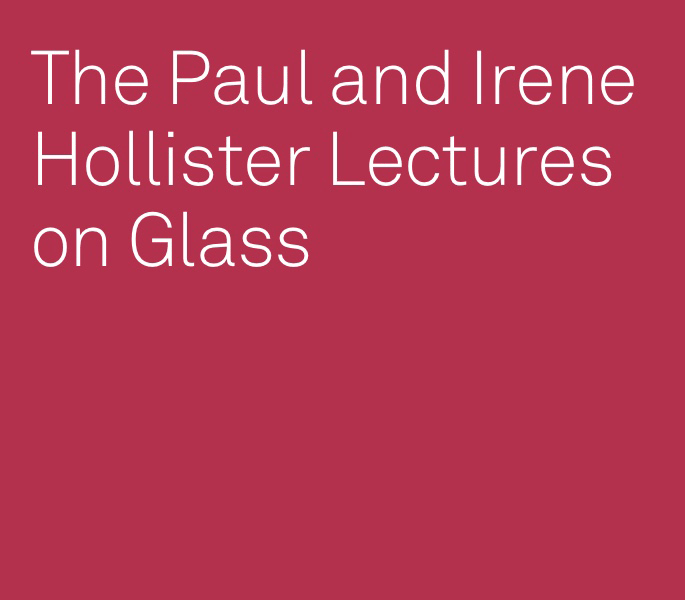|
|

|
|
|
Next week, we launch a new residency program that extends a visiting scholar’s time at BGC to a full week. Vera Keller, our first scholar-in-residence, will join us from Monday, October 18 to Friday, October 22. She will meet with students and faculty, visit a course, and present an informal seminar to the BGC community, in addition to delivering the Paul and Irene Hollister Lecture on Glass.
Vera Keller, associate professor at the University of Oregon, is a historian of science, technology, and knowledge more broadly of early modern Europe. She is the author of Knowledge and the Public Interest, 1575–1725 (Cambridge, 2015) and Interlopers: Early Stuart Projects and the Undisciplining of Knowledge (under review). Additionally, she has published over forty articles and essays and has co-edited volumes on the history of collecting in archives and museums. This year, as a Guggenheim fellow, she is completing a book tentatively entitled, Curating the Enlightenment: Johann Daniel Major (1634–1693) and the Experimental Century.
|
|
|
|
Coffee Hour with students and faculty
Monday, October 18, 4–5 pm
38 West 86th Street, 6th Floor Terrace
All students, faculty, and staff are invited to attend an informal gathering with Vera Keller.
|
|
The Paul and Irene Hollister Lecture on Glass
“Hyalomania: Early Modern Glass Research between the Disciplines”
Tuesday, October 19, 6–7:30 pm
38 West 86th Street, Lecture Hall
As one writer confessed in 1685, he and his peers had fallen prey to hyalomania, or a glass craze. Hyalomaniacs were scholars obsessed with researching many properties of glass, such as its flexibility, porosity, malleability, or the unusual ways in which it could break (such as with the mere sound of a human voice). Glass came under such scrutiny during a period when the power of human art to compete with nature was a major topic of debate. The making of sparkling glass out of crude, friable ingredients like sand and ash almost proved the human ability to perfect nature, except that glass was fragile. Through glass, humans came as close as they could to perfection, only to have those ambitions shatter in the ultimate symbol of vanity. This was why so many utopias of the period that imagined stronger, brighter, more powerful human civilizations boasted malleable or unbreakable glass. This was also why hyalomaniacs spilled so much ink investigating the possibility of rendering glass malleable, which, alongside turning lead into gold, was one of the vaunted powers of the philosophers’ stone. Erudite and craft traditions were merged in the study of glass using new, interlinked research tools and platforms including wish lists or research agendas, journal articles, academic seminars, and archaeological digs. By exploring how hyalomonia integrated varied forms of knowledge, this lecture shows how glass became a shared focus of attention spanning varied geographies, communities of expertise, and emergent scientific disciplines. It asks what difference it makes when an object, even an imagined one like unbreakable glass, serves as the subject of inquiry.
This talk will be accessible via Zoom in addition to being held in-person at 38 West 86th Street.
|

|
|
|
|
Brown Bag Lunch
“Tactics of Chambers: Strategy in Early Modern Museology”
Wednesday, October 20, 12:15–1:15 pm
38 West 86th Street, Lecture Hall
In 1674, Johann Daniel Major (1634-1693) claimed to establish a new discipline, the “Tactics of Chambers (Tactica Conclavium)…that is, the science (Wissenschaft) of setting up chambers of art and nature.” Major did not deploy the term “tactics” for this ground-breaking museology lightly. He frequently compared fields of knowledge to a battle field, across which many different sorts of objects had to be deployed strategically in order to achieve a certain aim. Major’s aim in the design of museums was the cultivation of experimentalism, an approach that, he said, applied to any domain of secular knowledge and not just the natural sciences. This seminar explores Major’s many tactics for winning a wide audience over to new ways of thinking by being strategic about the ways in which objects were displayed.
This talk will be accessible via Zoom in addition to being held in-person at 38 West 86th Street.
|

|
Classroom Visit
Friday, October 22, 1:30–4 pm
38 West 86th Street, 2nd Floor Classroom
Vera Keller will join “Ceramics and Society: A Social and Cultural History of European Ceramics, 1500-1900” with Professor Andrew Morrall.
|
Upcoming 2021-22 Residencies
Monday, October 25 to Friday, October 29, 2021: Felipe Gaitan-Ammann
Monday, November 1 to Friday, November 5, 2021: Ann-Sophie Lehmann
Monday, November 29 to Friday, December 3, 2021: Hannah Baader
Monday, January 31 to Friday, February 4, 2022: Shamil Jeppie
Monday, February 14 to Friday, February 18, 2022: Claudia Swan
Monday, February 28 to Friday, March 4, 2022: Charlotte Vignon
Monday, March 14 to Friday, March 18, 2022: Paul Basu
Monday, March 21 to Friday, March 25, 2022: Lothar von Falkenhausen
Monday, March 28 to Friday, April 1, 2022: Mónica Domínguez Torres
Monday, April 4 to Friday, April 8, 2022: Alison Clarke
Monday, April 11 to Friday, April 15, 2022: Bénédicte Savoy
Monday, April 18 to Friday, April 22, 2022: Carlo Ginzburg
|
|
COPY AND PASTE CODE BELOW TO MAILCHIMP
|